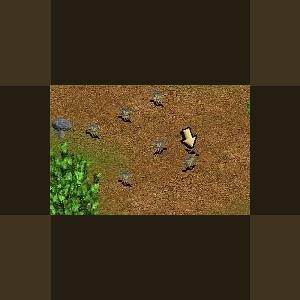About This File
Roadrunner species generally range in size from 18 inches (46 cm) to 24 inches (61 cm) from tail to beak. The roadrunner is a large, slender, black-brown and white streaked ground bird. It has long legs, strong feet, and an oversized dark bill. The tail is broad with white tips on the three outer tail feathers. The bird has a blank patch of skin behind each eye; this patch is is shaded blue proximally to red distally. The lesser roadrunner is slightly smaller, not as streaky, and has a smaller bill. The roadrunner is large and long-legged, with a thick, long black beak and a long dark tail. The bird is terrestrial; although capable of flight, it spends most of its time on the ground. During flight, the wings are short and rounded and reveal a white crescent in the primary feathers. Roadrunners and other members of the cuckoo family have zygodactyl feet (two toes in front and two toes in back). Roadrunners can run at speeds of up to 15 miles per hour (24 km/h) and generally prefer sprinting to flying. Roadrunners will fly to escape faster moving predators such as coyotes.
The roadrunner has a dove-like "coo" that is slow and descending.
Its distinct mating call is a very domineering tone, descending from a high pitch.
It also makes a rapid clattering sound with its mandibles.
Roadrunners are omnivores and are opportunistic. Their diet normally consist of insects (such as grasshoppers, crickets, caterpillars, and beetles), small reptiles (such as lizards and snakes, including rattlesnakes), rodents and small mammals, tarantulas, scorpions, centipedes, spiders, small birds, eggs, nestlings, and fruits and seeds like prickly pear cactus and sumac. The lesser roadrunner eats mainly insects. Roadrunners forage on the ground and, when hunting, usually run after prey from under cover. They may leap to catch insects, and commonly batter certain prey, such as snakes, against the ground.
Updated 2010-11-21
Just to save space with less in zip and smaller image.
Nothing new.



Recommended Comments
There are no comments to display.
Create an account or sign in to comment
You need to be a member in order to leave a comment
Create an account
Sign up for a new account in our community. It's easy!
Register a new accountSign in
Already have an account? Sign in here.
Sign In Now